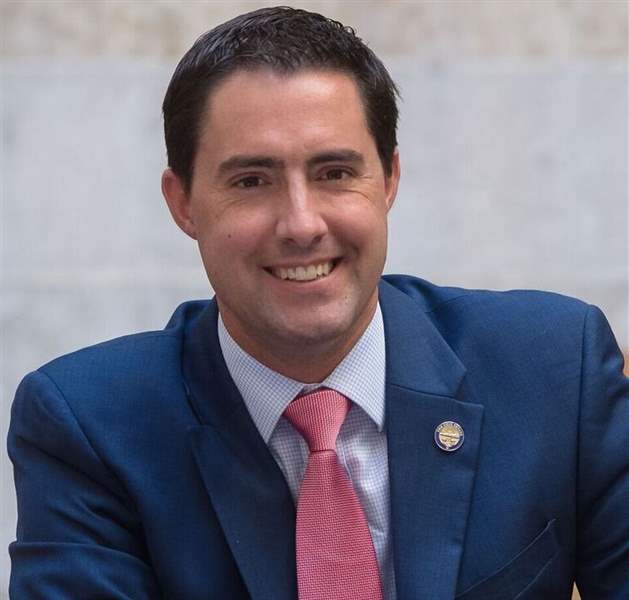
District lines issue in race for Ohio Secretary of State
Candidates differ on solution
7/1/2017
LaRose
State Sen. Frank LaRose, running for the Republican nomination for Ohio secretary of state, said Friday he hopes a congressional redistricting plan he proposed will be on the ballot next year for voter approval to create more balanced Ohio congressional districts.
Mr. LaRose, 38, of Hudson, was in Perrysburg Friday, after attending a fund-raiser at the Inverness Club in Toledo Thursday night. He was to continue on Friday to meetings in Henry and Paulding counties. He said he’s talked to party leaders in 83 counties in his quest to be the GOP nominee to succeed Republican Secretary of State Jon Husted.
An issue bubbling up in the contest is whether — and how — to change the way Ohio congressional districts are drawn. Mr. LaRose is the author of a Senate resolution that would require some bipartisan support for congressional district lines.
“I want my Republican Party to win elections the old-fashioned way — because we’ve got smarter candidates that have better ideas for governing, because we work harder,” not by “very creative drawing of legislative lines,” Mr. LaRose said.
The 2011 realignment of Ohio’s 16 congressional districts has been cited as an example of gerrymandering that has resulted in a congressional delegation that fails to reflect the state’s relatively neutral political leaning. While Ohio has voted for Democratic presidential candidates in the recent past and has a Democratic U.S. senator, its delegation has 12 Republicans and four Democrats.
The 9th Congressional District represented by U.S. Rep. Marcy Kaptur (D., Toledo) follows Lake Erie from central Toledo to West Cleveland, narrowing along the way to only a few thousand feet.
“If lakefront erosion gets too bad, that district gets cut in half,” Mr. LaRose said he has joked.
He noted that Ohio voters approved state legislative district reapportionment reform in 2015. Currently, congressional districts are decided by a vote of the legislature.
“That’s worked well for my party for the last few cycles but it doesn’t mean that it always will. I consider this tough love. Winning elections largely because you draw very creative district lines is not the best long-term strategy for a party,” Mr. LaRose said. “And I believe in competition.”
His proposal to modify how Ohio aligns congressional districts was introduced in March and referred to the Government Oversight and Reform Committee. If passed by both houses, the proposed constitutional amendment would go on the ballot in 2018 and would determine the way congressional districts are aligned in 2021.
Under Mr. LaRose’s plan, the ability of either political party to dominate the alignment of congressional districts would be curtailed.
His plan requires districts be drawn according to the same new standards to be used for Statehouse districts. The map would need a majority of each of the two largest political parties or two-thirds of all members in each chamber. If the proposed map doesn’t get the required General Assembly majority, it gets turned over to the seven-member Ohio Redistricting Commission.
His opponent for the Republican nomination, state Rep. Dorothy Pelanda (R., Marysville), is staking out the opposition position that could endear her to more conservative-leaning Republicans who don’t want to give up control of congressional redistricting. She objects to a commission that could include appointed members.
“I’m all for transparency. However, the potential for creating a commission to draw the lines made up of people some of whom may not be elected officials but appointed is a concern for me,” Ms. Pelanda said. “It’s a very liberal proposal to take away the legislative power to draw those districts potentially.
“As written, [Mr. LaRose’s resolution] almost guarantees the authority will be taken away from the legislature and given to people who are appointed, not answerable to anyone,” Ms. Pelanda said.
Also possibly heading to the ballot is an independent proposal from good government groups and voting rights advocates called the Fair Districts = Fair Elections coalition.
Contact Tom Troy: tomtroy@theblade.com or 419-724-6058 or on Twitter @TomFTroy.